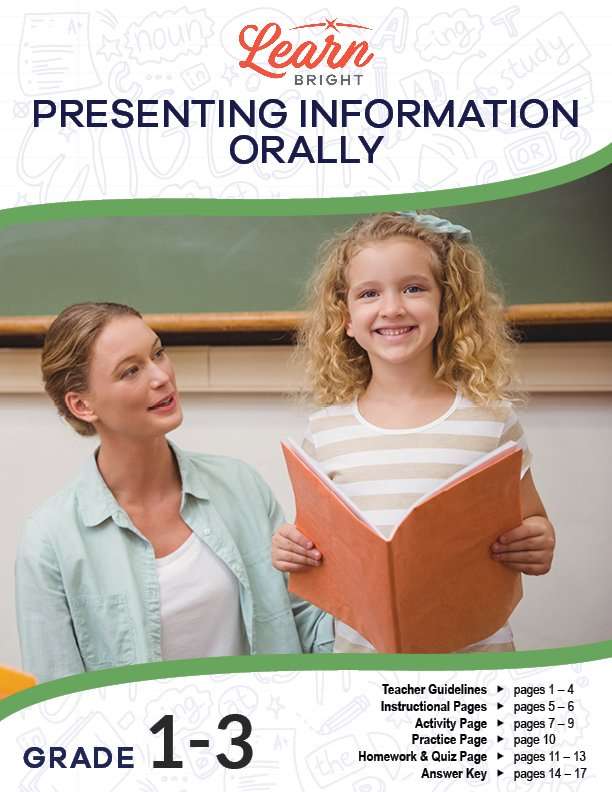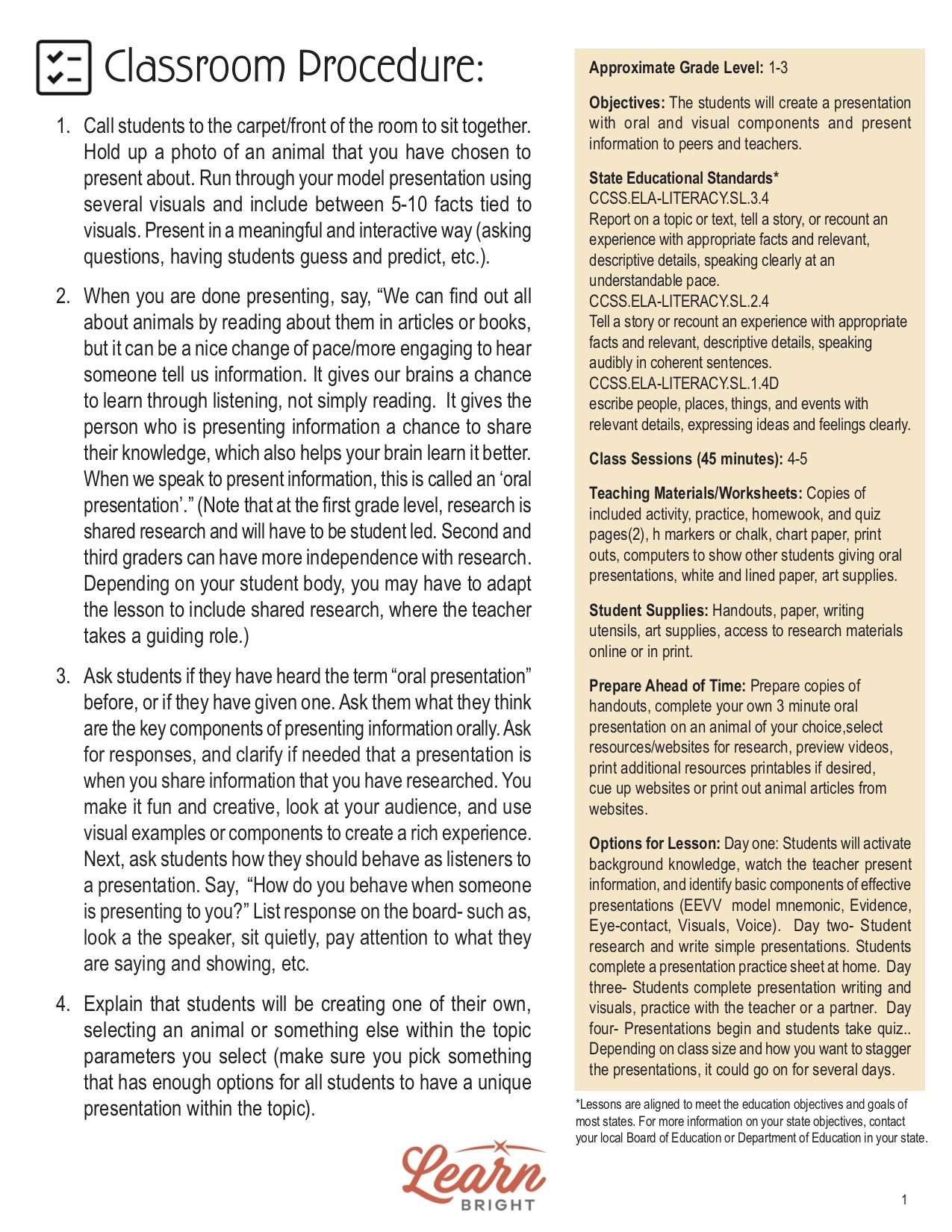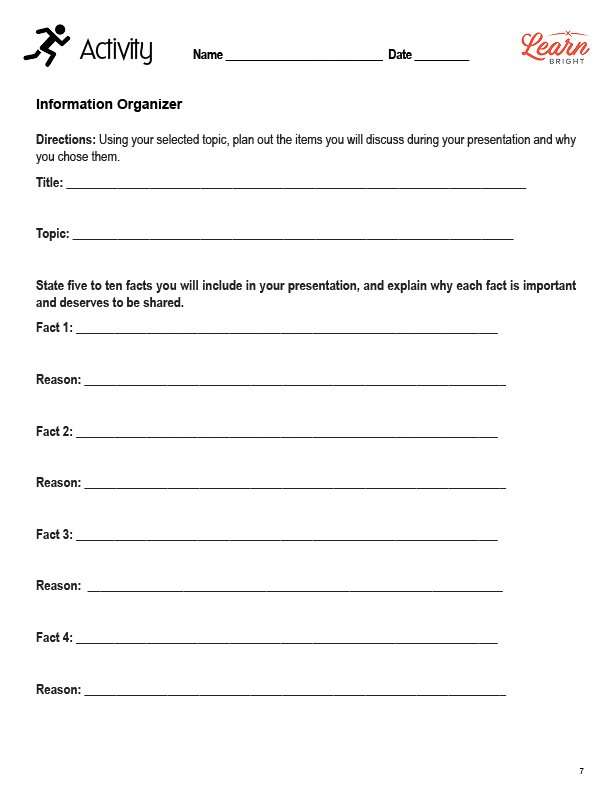Description
What our Presenting Information Orally lesson plan includes
Lesson Objectives and Overview: Presenting Information Orally helps students combine oral and visual features to create and present information to their peers and teachers. This lesson is a little different from most of our other lesson plans. Instead of presenting pages of instruction, you will provide a sample research presentation to the students. You will walk them through the process before starting the activity.
The purpose of this lesson is to allow students to demonstrate their ability to present orally. You will begin the lesson by presenting yourself on an animal of your choice. The lesson suggests you include between 5 and 10 facts and several visuals. The idea is to model how the students will do their own oral presentations. At this point, you can explain what an oral presentation is and how it can be a good way to learn something.
The two content pages contain a presentation about honey bees, specifically how bees make honey. There are a few citations at the end of the paper and several bullet points as well. You will explain the purpose of bullet points and how they help organize a research paper. You will explain to your students how to gather information and organize it into an engaging presentation.
CREATE A PRESENTATION ACTIVITY
The activity will act as the “information organizer” for the students’ projects. After they choose their topics, they will plan out which items to discuss and explain why they chose them. Then they will write down 5 to 10 facts about the topic and explain the reasons for including them. Then they will use the prompts in the boxes on the third activity page to organize all their information.
MAP THE PRESENTATION PRACTICE WORKSHEET
For the practice worksheet, students will continue the same line of thinking and map out their presentations. They will write the title and topic and what visuals they will include. Next, they will put their goal for how long the presentation will take them. They will then answer a few more questions about how timing and how to ensure they reach their goal time.
PRACTICE PRESENTING HOMEWORK ASSIGNMENT
The homework assignment requires students to talk with a parent, teacher, or other adult to practice presenting with. They will again write the topic and title of the project and then answer questions based on how they did during the “rehearsal” presentation. Then the adult to whom they presented will fill out the bottom boxes to provide feedback.
PRESENTING INFORMATION ORALLY QUIZ
The quiz tests students knowledge on some do’s and don’ts of presenting and have them describe the four aspects of the EEVV chart.









